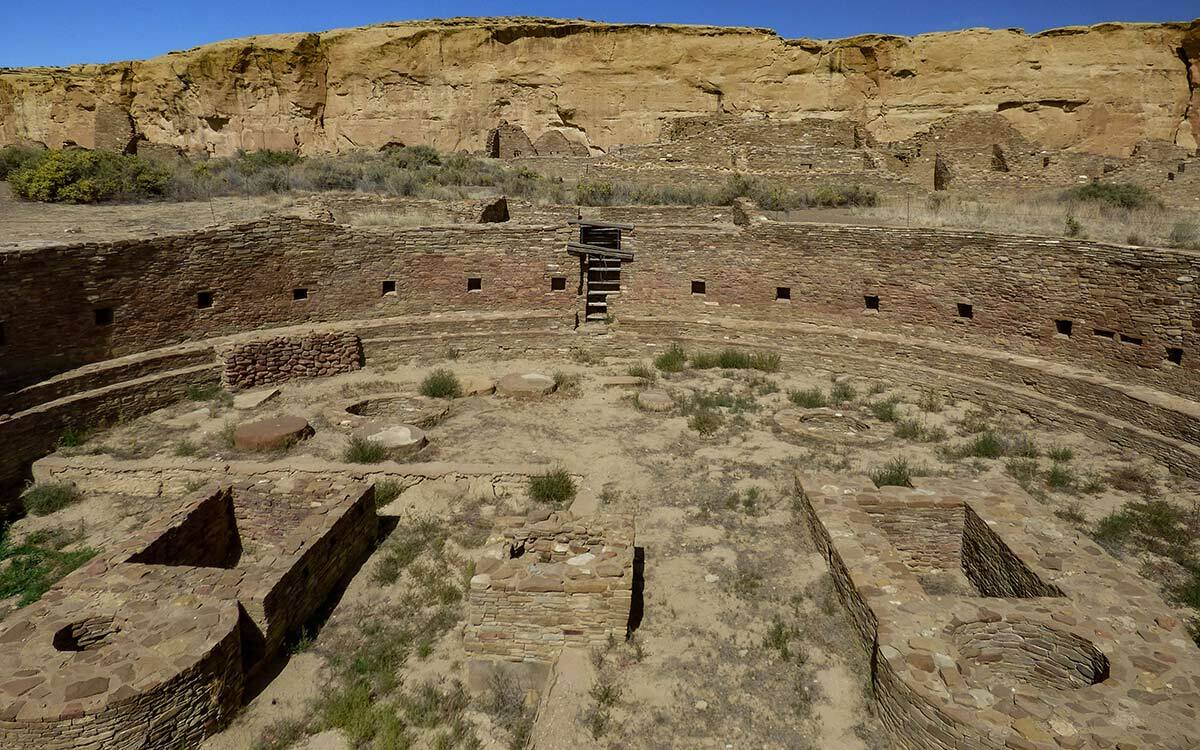Secrets Of New Mexico’s Chaco Canyon Observatory Sites

Have you ever wondered what makes Chaco Canyon Observatory Sites in New Mexico so special? These ancient ruins hold secrets of a civilization that thrived over a thousand years ago. Imagine standing where ancient astronomers once gazed at the stars, using the same rock formations to track celestial events. The Chaco Canyon Observatory Sites are more than just historical landmarks; they are windows into the past, offering clues about how early people understood the universe. Whether you're a history buff or a stargazing enthusiast, these sites offer a unique blend of natural beauty and ancient wisdom. Ready to explore?
Secrets of New Mexico's Chaco Canyon Observatory Sites
Chaco Canyon, located in northwestern New Mexico, is a place of mystery and wonder. Known for its ancient ruins and astronomical significance, this UNESCO World Heritage Site offers a glimpse into the lives of the Ancestral Puebloans. Let's uncover some of the most fascinating observatory sites within Chaco Canyon.
1. Fajada Butte
Fajada Butte stands as one of the most iconic features in Chaco Canyon. This towering rock formation is not just a natural wonder but also an ancient observatory.
- Sun Dagger: At the top of Fajada Butte, the Sun Dagger marks the summer solstice. Sunlight passes through three stone slabs, creating a dagger of light that pierces a spiral petroglyph.
- Equinox Markers: During the equinoxes, the Sun Dagger aligns perfectly with the spiral, showcasing the Ancestral Puebloans' advanced understanding of solar cycles.
2. Pueblo Bonito
Pueblo Bonito, the largest great house in Chaco Canyon, served as a cultural and ceremonial center. Its design reveals a deep connection to the cosmos.
- Kivas: These circular, subterranean rooms were used for rituals and possibly astronomical observations. The alignment of some kivas suggests they tracked celestial events.
- Wall Alignments: The walls of Pueblo Bonito align with cardinal directions, indicating a sophisticated knowledge of astronomy.
3. Casa Rinconada
Casa Rinconada is another impressive great kiva in Chaco Canyon. Its architectural features hint at its use as an observatory.
- Solstice Windows: Windows in Casa Rinconada align with the summer and winter solstices. Sunlight streams through these openings, illuminating specific points inside the kiva.
- Lunar Standstill: The kiva's design may also reflect the 18.6-year lunar standstill cycle, a rare astronomical event.
4. Una Vida
Una Vida, one of the earliest great houses, offers insights into the astronomical practices of the Ancestral Puebloans.
- Petroglyphs: Rock carvings near Una Vida depict celestial bodies and events. These petroglyphs likely served as astronomical records.
- Building Orientation: The orientation of Una Vida's structures aligns with solar and lunar cycles, demonstrating a keen awareness of the heavens.
5. Chetro Ketl
Chetro Ketl, another significant great house, showcases the Ancestral Puebloans' architectural and astronomical prowess.
- Plaza Alignments: The central plaza of Chetro Ketl aligns with the cardinal directions, suggesting it was used for celestial observations.
- Shadow Markers: Stone markers within the plaza cast shadows that align with solstices and equinoxes, acting as a prehistoric calendar.
6. Kin Kletso
Kin Kletso, a smaller great house, still holds astronomical significance.
- Solar Observation: The layout of Kin Kletso aligns with solar events, such as solstices and equinoxes. This alignment indicates its use in tracking the sun's movements.
- Star Alignments: Some researchers believe Kin Kletso's design may also reflect star patterns, further emphasizing its role as an observatory.
7. Wijiji
Wijiji, a lesser-known great house, offers unique insights into Chacoan astronomy.
- Equinox Alignment: The walls of Wijiji align with the equinox sunrise, highlighting the importance of this celestial event to the Ancestral Puebloans.
- Petroglyphs: Nearby rock art depicts astronomical symbols, suggesting Wijiji's role in celestial observations.
8. Penasco Blanco
Penasco Blanco, perched on a cliff, provides a panoramic view of the canyon and the sky.
- Supernova Pictograph: A rock painting near Penasco Blanco is believed to depict the supernova of 1054 AD. This event was visible worldwide and recorded by various cultures.
- Solar and Lunar Alignments: The site's orientation aligns with both solar and lunar cycles, indicating its use in tracking these celestial events.
Discovering Chaco Canyon's Mysteries
Chaco Canyon's observatory sites offer a unique glimpse into ancient astronomy. These structures, built by the Ancestral Puebloans, show their deep understanding of the stars and seasons. Visiting these sites, you can feel the connection between the past and the cosmos. The intricate alignments and architectural marvels reveal a culture that valued both science and spirituality.
Exploring Chaco Canyon isn't just about seeing old ruins. It's about experiencing a place where history and the night sky come together. Whether you're an archaeology enthusiast or a stargazer, Chaco Canyon has something special to offer. The canyon's remote location adds to its mystique, making it a perfect destination for those seeking adventure and knowledge.
Plan your visit to Chaco Canyon and uncover the secrets of this ancient observatory. The experience will leave you with a deeper appreciation for the ingenuity of the Ancestral Puebloans.

